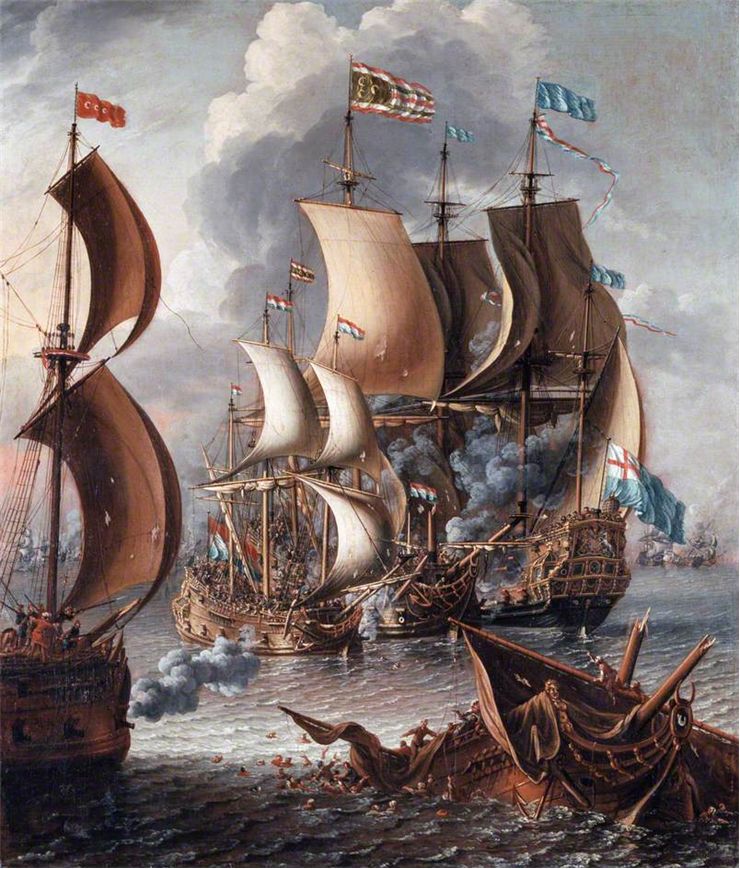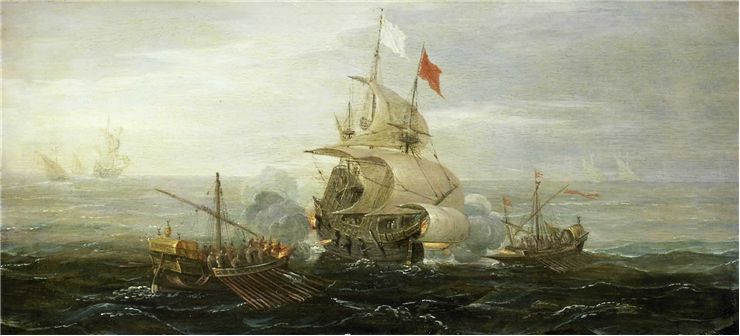Corsair - Barbary Pirates and Privateer Corsairs
Corsair is a term that described two types of pirate that operated in two completely different areas of the world, but their prolonged presence and disruptive operations caused them to remain remembered forever.
These original corsairs were organized pirate fleets of Barbary pirates that operated out of large ports in Barbery Coast, most notably cities of Tripoli, Tunis, Algiers, Rabat, and Sale. They started harassing European shipping and western European coastal cities in early 16th century. They were able to do such feats by building fast and durable ships using not Naval technologies developed in Europe, but also the expertise of several English privateer captains who elected to become corsairs. Barbary corsairs primarily harassed western Mediterranean and the coasts of Portugal, Spain, and France, although some raiding expeditions were sent to Ireland, a coast of North Africa and the even Caribbean.
The primary reason for these corsair raids was not only to capture the wealth of merchant shipping, but also to capture Christian slaves that could be sold across all territories of Ottoman empire. It is believed that between 16th and 19th century Barbary Corsairs managed to capture between 800 thousand and 1.25 million people as slaves. After the peak of their activity in early to mid 17th century, European naval powers organized their military might into fighting the corsairs openly, and governments pressured Ottoman empire with trade blockades if such brazen acts of Corsair piracy were not put into check until much later. The largest organized fight against corsairs happened after Napoleonic Wars when many European powers formed a plan of action at Congress of Vienna in 1814-1815. Even with all that, the western Europe countries that were in easy reach of corsair raiding parties preferred not to start building new coastal settlements even until mid 19th century. The age of Barbery Corsairs finally ended in 1830 after France invaded and conquered Algiers. The most famous Barbary Corsairs were Barbarossa brothers (Oruc and Hizir Hayreddin), Sayyida al-Hurra and Captain Jack Ward, an English privateer that became Corsair after he and his crew converted to Islam in 1603.
Since the Barbery Coast pirates managed to do so much damage in coastal Europe and Mediterranean, the term “corsair” quickly became a synonym for any unsanctioned pirate activity. This was mostly apparent during the decades when English, French, and Dutch governments fought against Spain. Many private and military vessels in that age became privateers, fighting forces that strived to disrupt Spanish naval trade and cause damage to Spanish cities and possessions. While the general piracy covered much larger territory, privateers were located mostly in the Caribbean. While many privateers claimed to have official government support to harass the Spain’s interest in the Caribbean, in fact, many of them did not, and in any case, Spain, and their population viewed them all as illegal pirates. They openly named them buccaneers and corsairs, and all captured privateers were put to death no matter if they had royal orders or not. Some privateers who had a high standing in English government were not officially condemned by their superiors if they attacked without orders. One of such captains was famed captain Henry Morgan who had particular successes in harassing the Spanish. He despised being called a corsair, even though he often performed horrific acts without the consent of English government (such as the sacking of Panama in 1671).
While the struggle in Europe regarding Spanish throne and interests was alive, many European governments turned the blind eye toward illegal privateer actions in the Caribbean. However, after the end of the War of the Spanish Succession in 1715 many of then active privateers did not want to stand down, often openly becoming pirates and continuing harassing merchants of all nations. This forced European governments to organize their military fleets into ending the majority of the pirate activity from the Atlantic in the early 1730s, thus ending the famous “Golden Age of Piracy”.

